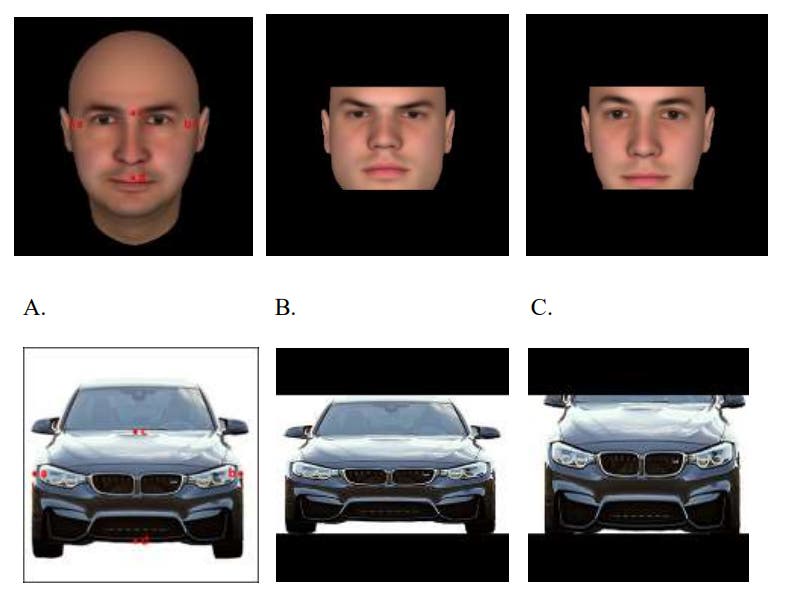Modern product design is focused on aesthetics and functionality but that might not be the whole picture at all. Brands could attract new customers and charge a premium to boot if they also keep an eye on specific consumer personality traits that their products can touch. For instance, according to a new study performed by the University of Kansas, consumers prefer to buy products with wider faces on cars or watches when they want to be perceived as more dominant in certain situations.

Our knack for faces
If there’s one thing that computers still can’t do nearly as well as humans do, it’s pattern recognition — and no pattern is more easily recognizable than the human face. We’re basically hard-wired to recognize them because the human face is packed with cues that instantly inform us about a person’s identity, age, gender, mood, attractiveness, race, and friendliness. Humans and other primates even have specialized neurons in their brains – specifically six patches in the temporal lobe — dedicated to processing and recognizing faces.
Sometimes, however, this propensity for the human countenance makes us see faces in inanimate objects such as rocks or electricity plugs. When this happens, we usually shrug it off after a couple miliseconds of processing realizing that’s just a rock, though some people just can’t get over it. For instance, in the 1970s, NASA released a low-resolution photo taken by Viking 1 showing an area on Mars called Cydonia Mensae. The light, shadows, and low-resolution orbital photography made the outcrop uncannily resemble a human face. Even to this day, some people are convinced the ‘Face on Mars’ is a NASA cover-up conspiracy despite modern high-resolution images plainly showing this is just big freaking rock.

Shut up and take my money
Our tendency for anthropomorphism can also be a useful commercial trait for some companies, as Ahreum Maeng, an assistant professor of marketing at the KU School of Business, recently demonstrated.
“These kinds of things are automatically going on in people’s brains,” Maeng said in a statement. “When we see those shapes resembling a human face in the product design, we can’t help but perceive it that way.”
While previous studies found people are averse to wider faces because these elicit a fear of being dominated, the reverse effect seems to be true in the case of wider faces on products in a situation where the consumer wants to feel being dominant.
In five experiments, participants were asked to examine photos of human faces that ranged from a low width-to-height ratio (narrow and non-dominant) to a higher such ratio (wide-jawed and dominant). The participants then examined photos of products resembling faces, such as cars and watches, which similarly had a varied width-to-height ratio.
Finally, the study’s volunteers were asked to imagine different scenarios, like preparing for an encounter with either an old high school bully or a former sweetheart at the 10-year-old high school reunion.
When the participants felt they were in a situation that required them to assert more dominance, such as when meeting the old high school bully or in a meeting for a tough business negotiation, they were more inclined to prefer wider-faced products. When the situation called for a less pronounced desire to be perceived as dominant, this effect was less pronounced and people didn’t give nearly as much importance to products with a high width-to-height ratio.
“It’s probably because people view the product as part of themselves and they would think, ‘it’s my possession. I have control over it when I need it, and I can demonstrate my dominance through the product,” Maeng said.
Maeng says that some brands might one to pay attention to his findings especially since the consumer preference for dominant-looking products is not the same as people’s preference for luxury items. Previously in 2013, her team found a positive correlation between automobile prices and width-to-height ratio which suggests manufacturers can charge more for products with such an appearance. This enough “can have marketplace impact — by significantly improving the company’s bottom line,” Maeng concluded, whose findings appeared in the journal Consumer Research.


